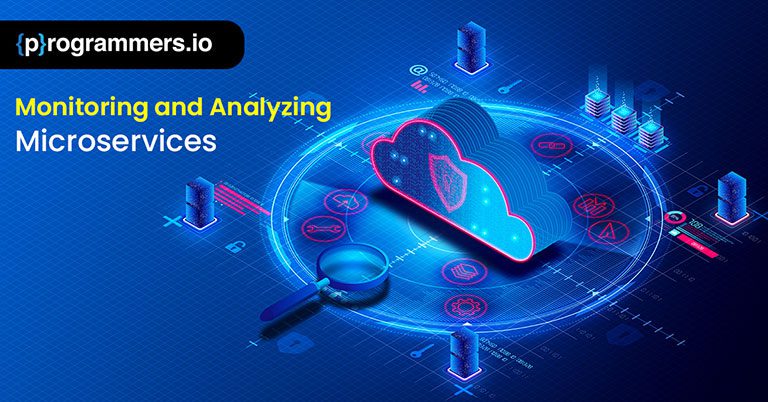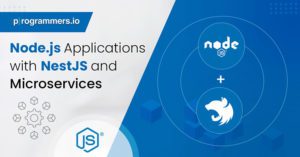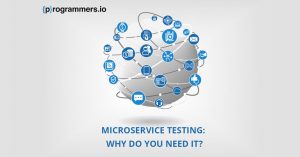Tools for Monitoring and Analyzing Microservices
Monitoring and security are important parts of managing and maintaining any IT service. Microservices, due to their unique shape and form, bring a completely new set of challenges. For instance, developers have to consider multiple points of failure across a microservice system and make sure that all avenues are covered.
Read: Why You Need Microservice Testing
In this article, we take a look at the challenges of microservice monitoring and security, the tools you can use for monitoring and the best techniques for doing so. Stay with us to implement the knowledge.
Challenges in Microservice Monitoring and Security
Some of the challenges that organizations face in providing microservice monitoring and security include:
Multiple Entities Require Security
Infrastructure teams working on DevOps have to secure multiple entities and microservices to ensure that security is flawless and top-notch. Not too long ago, multiple software functionalities and processes would run together on one virtual machine.
However, today each capability or process is packaged in a serverless function within a separate container. Almost all entities are vulnerable in their own way and require separate security protocols. The development lifecycle requires protection through each stage for each separate entity.
Diverse Patterns in Architecture
Microservices cover multiple private and public clouds, architectures and cloud services. Each architectural pattern tends to have different vulnerabilities, which can come to the fore over time and require special solutions. Security teams have to understand the complex surface and find solutions catered to this problem.
Constant Changes
The environments for public and private cloud solutions are constantly changing. Rapid releases in the software cycle mean that each component of the application you use is being updated on a regular basis. The adoption of IaC and immutability practices mean that the code for applications is constantly being recreated.
Tools for Monitoring Microservices
The monitoring process for microservices is largely focused on gathering and analyzing data in one place. The tools that can help you in doing so include:
- Zipkin: Zipkin is an interesting open-source tracking system that can help you trace calls across different microservices. The tool is useful for identifying and limiting latency problems.
- Raygum APM: Raygun’s platform is perfect for providing a complete system for microservice monitoring. The system comes with a unique dashboard that can help you measure data and study metrics.
- Apache Kafka: Kafka follows a publishing methodology for writing data through a logical stream. Kafka can be used together with other tools such as Zipkin for the best results.
- Grafana: The data you generate through the tools above can be interpreted through Grafana. Grafana is a data visualization tool that helps create visual aids and dashboards.
- Prometheus: Prometheus is a popular monitoring solution available for free. The tool is combined with Grafana for proper data.
Ways to Secure Microservices
Having highlighted the challenges of securing microservices and the tools required for monitoring them, we now look at the best techniques you can follow to do the same. The best ways for securing cloud native applications include:
Shift Your Security to the Left
Most companies today still rely on security tools and techniques that aren’t capable of handling the size, speed and dynamic network of applications that are native to the cloud. Serverless features can make the infrastructure abstract, aggravating the problem in the process.
Cyber attackers basically look for vulnerabilities that they can exploit within the serverless technology and core functions of containers. Another problem is that organizations tools focused on CI/CD to continuously test and release applications. Providing your security team with the right tools for retrieving trusted images can help solve this problem and provide an end to the vulnerabilities.
Apply Perimeter Security
The integrated system in serverless applications is broken down into callable components interlinked to one another. These components accept triggers from multiple sources. Attackers can use this vulnerability to target multiple vectors at one.
Application security tools, along with API integration, can help secure the cloud-native environment. Organizations can also enforce parameter security at functional levels to monitor anomalies and limit the frequency of triggers.
Minimize Roles
Cloud-native resources frequently interact with one another. Organizations can assign a unique permission to each container or serverless function to enhance security. Organizations can enforce security by running containers in a cluster and providing functions on a granular basis. This minimization of roles will ensure that if a component is attacked or compromised, the damage will be minimized and will not trickle over into other components.
Secure Dependencies for Native Applications
Serverless application codes and functions often include dependencies that are taken from repositories such as PyPI or npm.
Organizations need automated tools to protect the dependencies in their application. Organizations also require native orchestration for cloud apps to trigger secure solutions during development. Continuously running these tools can help with the prevention of vulnerabilities in the future.
Shared Responsibility
There should be a closer agreement and collaboration between the DevOps, security and developers’ teams. This closer collaboration will help make sure that the system is looked after and the code is secured. Security teams should be aware of the development, testing and deployment methods so that they can protect the native apps through all processes. Cloud-native apps also offer teams an opportunity to shift towards shared ownership and better collaboration. This collaboration can help initiate better understanding across the board.
This article helps build a better monitoring and management solution for microservices and cloud-native apps. By now we expect you to understand the major tools for monitoring microservices and how they help.










